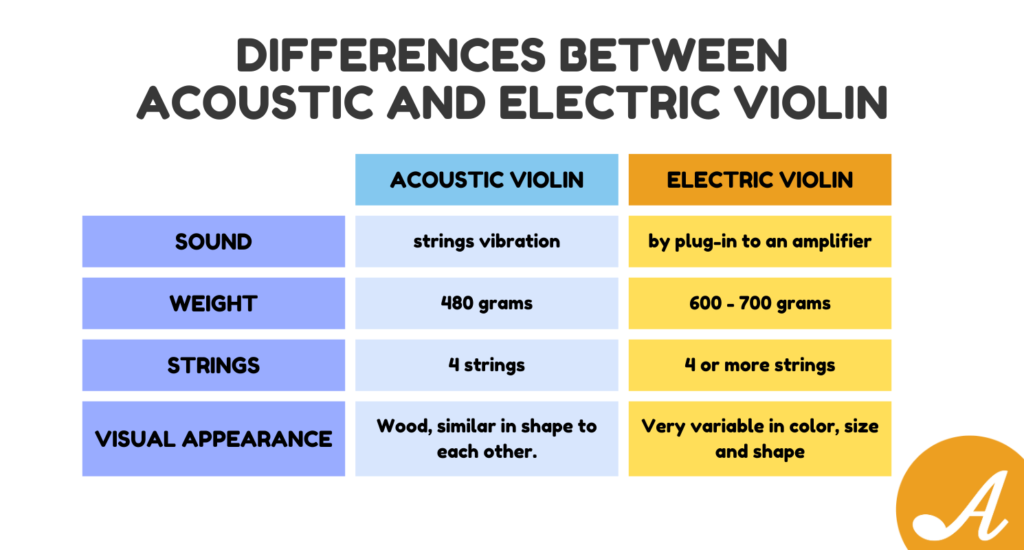We live in an era marked by digitalization and technology. The latter has transformed such important elements as music, something made possible by the evolution of instruments. One example is the electric violin, which, although born 100 years ago, has gained greater popularity in recent decades.
An electric violin is an instrument with an electronic output signal. It typically has a solid body, so it can be heavier than an acoustic violin. This term can refer to an acoustic violin that incorporates an electromagnetic transducer or pickup, or to an instrument designed from the ground up as completely electronic.
How does an electric violin work?
The electric violin produces a very soft sound from its strings. Its body serves as a structure to hold the different parts of the instrument, but it doesn’t act as a sound box like a classical violin. The electric violin simply records the vibration of the strings and transcribes it into an electromagnetic signal, which is then amplified to reproduce the sound.
When playing music on an electric violin, the sound doesn’t reach the violinist’s ears directly. In this case, the sound travels longer, which requires some adaptation for the player, especially if they are used to classical violins.

One detail that will surely interest you greatly regarding the operation of electric violins is the use of multi-effects. These can be used to transform and enhance the sound produced by the instrument. With effects pedals, you can play in all musical registers, be it pop, metal, rock, jazz, etc.
What does an electric violin sound like?
An electric violin’s sound is achieved through electrical amplification. As we explained earlier, this instrument must transcribe the vibration of the strings into an electrical signal, which is then transmitted to an amplifier. This electrical signal is “manufactured” through sensors in the bridge, which may be just one or several. The sound, and its quality, will depend on both the type of bridge and the number of sensors it has.
What is the difference between an acoustic and an electric violin?
It is important to keep in mind that these are instruments that have marked differences.

Sound
The acoustic violin produces its sound through the vibration of the strings and its own hollow body, which acts as a sounding board to amplify the strings’ vibrations. This is not the case with the electric violin, as its body is usually solid and must be connected to an amplifier to be heard.
Weight
The differences in their construction also influence their weight. An acoustic guitar weighs around 480 grams, while electric guitars can easily exceed that weight. It’s important to keep them from being too heavy, as this can tire your hands and arms excessively and cause long-term problems.
Strings
These instruments can also be differentiated by the number of strings they have. Classical acoustic violins have four strings: D, G, A, and E. However, electric violins can have four or more strings. So if you see one with five strings, don’t be surprised.
Visual appearance
This is another clear difference between the two instruments. Acoustic violins have a standard design and size, so they will always look the same. There are no predefined visual rules for electric violins. They can have any design and color, and be made of any material.
What are the Prices and Recommended Brands of Electric Violin?
If you’re a classical violinist, a novice musician, an aspiring rock or jazz performer, or just passionate about this instrument, and you want to buy an electric violin, it’s important to know how much it can cost.
You can find violins on the market with widely varying prices. It all depends on the model, brand, features, etc. The cheapest ones you can find start at around $150. However, these are usually simple instruments.
A higher-quality instrument will cost more than $500. For a budget between $500 and $1,000, you can find good options from brands like Yamaha, Wood Violins, NS Design, and Barcus-Berry. However, in this case, their features may be somewhat limited and they may have basic construction.
For over 1,000 dollars, you can find more outstanding electric violin options, with higher-quality construction and finishes. In this price range, you’ll find models perfect for professionals.
As for the brand, you should know that the options are also varied. But if you’re wondering which is the best electric violin brand, many will agree that it’s Yamaha.
Do you want to learn to play the electric violin?
If you’re looking to learn different violin techniques and apply them to your electric violin, we invite you to follow us on YouTube to see our videos and violin song covers. We also have dictionaries and step-by-step violin tutorials so you can take your violin lessons from home.

